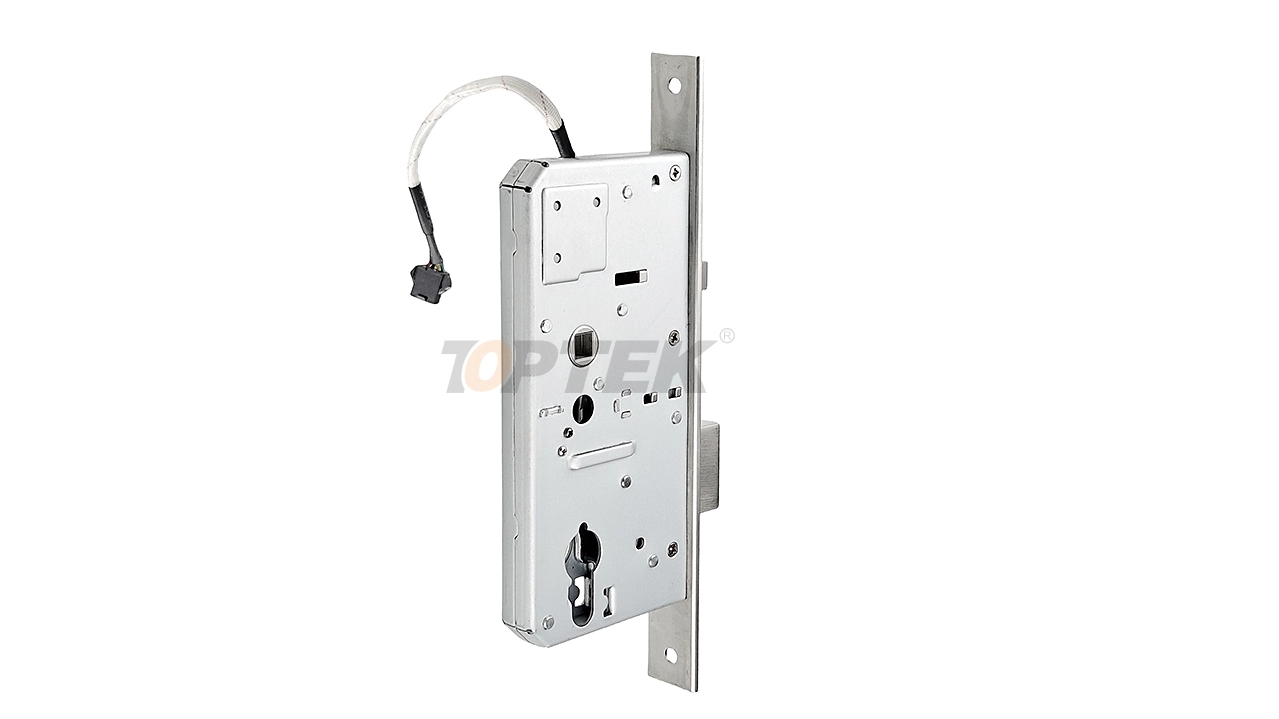When specifying commercial door hardware across Europe, understanding regional standards becomes crucial for architects, contractors, and facility managers. European standard commercial hardware differs significantly from North American systems, with unique requirements for everything from lock cylinders to fire safety compliance. These standards ensure consistent performance, safety, and interoperability across the European Union's diverse markets.
European commercial hardware standards have evolved to address the continent's specific architectural traditions, security concerns, and regulatory frameworks. Unlike other regions where standards may vary significantly between countries, Europe has developed harmonized specifications that streamline procurement while maintaining rigorous quality requirements.
This comprehensive guide explores the key aspects of European standard commercial hardware, with particular attention to critical safety components like EN 1634 fire rated door locks. Whether you're working on a new construction project in Berlin or retrofitting an office building in Barcelona, understanding these standards will help ensure compliance and optimal performance.
Key European Hardware Standards and Certifications
European commercial hardware operates under several interconnected standards that govern different aspects of performance and safety. The European Committee for Standardization (CEN) develops these standards to ensure consistency across member nations.
EN 12209 covers the classification of mechanical properties for lock cylinders, establishing performance grades based on durability, security, and operational requirements. This standard helps specifiers choose appropriate hardware based on expected usage levels and security needs.
EN 1303 defines requirements for cylinders used in building hardware, including dimensional specifications, key profiles, and performance criteria. This standard ensures that cylinders from different manufacturers can work together within the same system.
EN 179 and EN 1125 address emergency exit hardware, specifying requirements for panic bars and emergency exit devices. These standards are particularly important for commercial buildings where rapid egress is essential for occupant safety.
The CE marking system requires manufacturers to demonstrate compliance with applicable European standards before products can be legally sold within the EU. This marking provides assurance that hardware meets established safety and performance requirements.
Understanding EN 1634 Fire Rated Door Lock Requirements
Fire safety represents one of the most critical aspects of European standard commercial hardware. The EN 1634 fire rated door lock standard establishes specific requirements for hardware used in fire-resistant door assemblies.
Performance Under Fire Conditions
EN 1634 fire rated door locks must maintain their integrity during fire exposure while allowing controlled access. The standard specifies that locks must continue functioning for the full fire resistance period of the door assembly, whether that's 30, 60, 90, or 120 minutes.
During fire conditions, these locks must prevent the door from opening due to thermal expansion or structural deformation. This requirement ensures that fire doors continue to compartmentalize buildings effectively, protecting escape routes and limiting fire spread.
Testing and Certification Process
Manufacturers must subject EN 1634 fire rated door locks to rigorous testing protocols. These tests simulate actual fire conditions, exposing complete door assemblies to controlled temperature increases that follow the standard fire curve.
The testing process evaluates multiple criteria including integrity (preventing flame or hot gas passage), insulation (limiting temperature rise on the non-fire side), and radiation (controlling radiant heat transmission). Hardware must pass all applicable criteria to receive certification.
Third-party testing laboratories conduct these evaluations, and successful products receive certificates that specify their fire resistance rating and approved applications. Regular audits ensure ongoing compliance with standard requirements.

Installation and Compliance Considerations
Proper installation of European standard commercial hardware requires attention to numerous details that affect both performance and compliance. Door preparation, hardware positioning, and adjustment procedures all follow specific protocols established by European standards.
Door Preparation Requirements
European standards specify precise tolerances for door preparation, including hole sizes, spacing requirements, and edge preparation. These specifications ensure proper fit and function while maintaining the structural integrity necessary for security and fire performance.
Mortise preparations for European locks typically follow different dimensions than North American hardware. Lock cases are often deeper and may require specific strike plate configurations to achieve proper alignment and security.
Fire Door Assembly Considerations
When installing EN 1634 fire rated door locks, the entire door assembly must maintain its fire resistance rating. This means using certified hardware combinations, proper installation techniques, and approved mounting methods.
All penetrations through fire doors must be properly sealed using approved fire-stop materials. Hardware mounting screws must meet specified requirements for material composition and installation torque to ensure they don't compromise fire performance.
Ongoing Maintenance Requirements
European standards emphasize the importance of regular maintenance for commercial door hardware. Fire rated assemblies require periodic inspection to ensure continued compliance with safety requirements.
Maintenance schedules typically include checking door alignment, verifying proper closure, testing emergency exit functions, and inspecting hardware for signs of wear or damage. Documentation requirements help building owners demonstrate ongoing compliance with safety regulations.
Regional Variations and Market Considerations
While European standards provide harmonization across the continent, some regional preferences and requirements still exist. Understanding these variations helps specify appropriate hardware for specific markets.
Northern European Markets
Scandinavian countries often emphasize energy efficiency and environmental considerations in hardware selection. Cold climate performance requirements may necessitate special materials or treatments to prevent condensation and ensure reliable operation.
Southern European Preferences
Mediterranean markets may prioritize corrosion resistance due to coastal environments and higher humidity levels. Stainless steel components and special finishes become more important in these applications.
Central European Requirements
Countries like Germany and Austria often have additional security standards that exceed basic European requirements. These markets may require enhanced cylinder security ratings or additional testing certifications.
Future Developments in European Hardware Standards
European standard commercial hardware continues evolving to address new technologies and changing building requirements. Digital access control integration, sustainability requirements, and enhanced security features drive many current developments.
Smart lock technology integration presents both opportunities and challenges for European standards. New requirements address cybersecurity, battery life, and fail-safe operation while maintaining compatibility with existing mechanical systems.
Environmental regulations increasingly influence hardware specifications, with new requirements for recyclability, energy efficiency, and sustainable manufacturing processes. These developments reflect broader European Union environmental goals and regulations.
Ensuring Successful Specification and Implementation
Success with European standard commercial hardware requires understanding both the technical requirements and the broader context of European building practices. Working with knowledgeable suppliers and certified installers helps ensure proper specification and installation.
Regular training on European standards helps architects and specifiers stay current with evolving requirements. Industry associations and standards organizations offer resources for continuing education and technical support.
Building strong relationships with European hardware manufacturers and distributors provides access to technical expertise and ensures availability of compliant products for your projects.
Understanding European standard commercial hardware, particularly critical safety components like EN 1634 fire rated door locks, enables confident specification decisions that meet both performance requirements and regulatory obligations. As European markets continue evolving, staying informed about standards developments ensures your projects remain compliant and competitive.
European Standard Commercial Hardware
European commercial hardware suppliers
European commercial hardware
English
العربية
Français
Русский
Español
Português
Deutsch
italiano
日本語
한국어
Nederlands
Tiếng Việt
ไทย
Polski
Türkçe
አማርኛ
ພາສາລາວ
ភាសាខ្មែរ
Bahasa Melayu
ဗမာစာ
தமிழ்
Filipino
Bahasa Indonesia
magyar
Română
Čeština
Монгол
қазақ
Српски
हिन्दी
فارسی
Kiswahili
Slovenčina
Slovenščina
Norsk
Svenska
українська
Ελληνικά
Suomi
Հայերեն
עברית
Latine
Dansk
اردو
Shqip
বাংলা
Hrvatski
Afrikaans
Gaeilge
Eesti keel
Māori
සිංහල
नेपाली
Oʻzbekcha
latviešu
অসমীয়া
Aymara
Azərbaycan dili
Bamanankan
Euskara
Беларуская мова
भोजपुरी
Bosanski
Български
Català
Cebuano
Corsu
ދިވެހި
डोग्रिड ने दी
Esperanto
Eʋegbe
Frysk
Galego
ქართული
guarani
ગુજરાતી
Kreyòl ayisyen
Hausa
ʻŌlelo Hawaiʻi
Hmoob
íslenska
Igbo
Ilocano
Basa Jawa
ಕನ್ನಡ
Kinyarwanda
गोंगेन हें नांव
Krio we dɛn kɔl Krio
Kurdî
Kurdî
Кыргызча
Lingala
Lietuvių
Oluganda
Lëtzebuergesch
Македонски
मैथिली
Malagasy
മലയാളം
Malti
मराठी
ꯃꯦꯇꯥꯏ (ꯃꯅꯤꯄꯨꯔꯤ) ꯴.
Mizo tawng
Chichewa
ଓଡ଼ିଆ
Afaan Oromoo
پښتو
ਪੰਜਾਬੀ
Runasimi
Gagana Samoa
संस्कृत
Gaelo Albannach
Sepeti
Sesotho
chiShona
سنڌي
Soomaali
Basa Sunda
Wikang Tagalog
Тоҷикӣ
Татарча
తెలుగు
ትግንያውያን
Xitsonga
Türkmençe
संस्कृत
ئۇيغۇرچە
Cymraeg
isiXhosa
ייִדיש
Yorùbá
isiZulu






































